| Check out the SVPwiki | SVP Cosmology 2.3 |
NYT -HAMILTON, Ontario, July 27, 1875.- A new motor, said to rival the Keely motor, is in operation in this city. The motive power consists of nine parts of air and one of coal-gas, which operates as an explosive. The inventor challenges the Keely motor to a trial.
NYT -PHILADELPHIA, Oct. 29, 1883.- The stockholders of the Keely Motor Company are up in arms again, and are preparing for another suit against the inventor. Great dissatisfaction has been felt by the stockholders, who visited the shop on July 4 last, at the inventors special request, made months before, to make the inaugural journey to New York. The complaints come from Mr. Keelys former friends, and the suit is to be brought in the name of the company against Keely for the fulfillment of his many pledges.
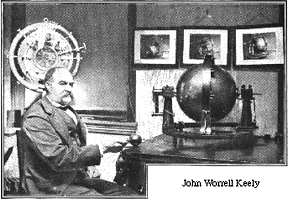
NYT -October 23, 1887 - The credulity of American capitalists has become a byword among the nations of the earth, and the supposition is very general that in this country money can always be had to float any kind of a scheme which shows on the surface the barest possibility of profit in the future. Such visionary projects as perpetual motion, the Keely motor, and other propositions to revolutionize the laws of nature have always found advocates in America who were willing and anxious to support their faith by dollar, and millions of American capital have been sunk in them to the advantage of the men who are always just on the point of inventing, but who somehow never seen to invent. Whether this credulity is the result of a national weakness, or simply the effect of the speculative enterprise which is a feature of American life, and which induces large investments in anything giving the least promise of an ultimate return, it is not important to inquire. The fact is patent that the United States of America has been the most fertile field in the world for the cultivation of so-called inventors who depend upon the credulity of the public to enable them to live in luxury while professedly working out problems which they insist are to change the entire operation of natural forces. There are indications, however, that the American people are opening their eyes to the nature of the plots to which they have been victims in the past, and that the reign of the visionary-to assume that these inventors are honest in their professions, and victims to themselves-is drawing to a close. One of the pleasantest of these indications is the fact that the "discoverer" of the Keely motor has apparently at last exhausted his means of drawing money from a gullible American people. The absurdly of Mr. Keelys pretensions has been exposed by THE TIMES more than once, and the unsatisfactory nature of his exhibitions, made in a workshop, the secrets of which he invariably declined to reveal, and where he had every opportunity to deceive the expectators, has been fully explained. But for years he has managed to extract plenty of money from his stockholders, and the work of mystifying them and the general public has gone on, while his "motor" has always been just on the point of being fully developed, but has never got beyond that point. Now, judging from the fact that a series of articles devoted to the mysterious motor is appearing in the Pall Mall Gazette, Mr. Keely and his backers are preparing to swoop down upon the British public and work a new and hitherto untrodden field. It is quite evident that America has had enough of the "motor." To use a slangy, but expressive phrase, it has become "tired" of Mr. Keely, and Mr. Keely has reluctantly awoke to the fact. The articles in the Pall Mall Gazette are of precisely the kind calculated to tempt capitalists to invest in the Keely motor. They profess to be the work of "an almost-persuaded correspondent," and they give sketches of such parts of the machine as Mr. Keely dares to show, and describes his idiotic experiments with the "tuning fork" in detail. They tell just enough to awaken interest in the so-called theories of the self-styled inventor, and leave just enough unsaid to surround the "motor" with an attractive air of mystery. They are imitations in all essential features of the early Keely motor literature, and are calculated to do in England what that literature did in America, awaken an interest in the scheme which is to be turned to financial account when the British bird is deemed ready for plucking. Whether the scheme is successful or not, it is creditable to our national character that the American bird refuses to be plucked longer. It is an evidence that the days of our youthful credulity as a nation are rapidly passing away, and that future visionaries will not find American capitalists so ready to invest in bubbles like the Keely motor.
THE CONTEMPT CASE BEFORE THE SUPREME COURT.
NYT -PHILADELPHIA, Nov. 20, 1888.- John W. Keely, the inventor of the Keely motor, who was committed to jail by Judge Finletter on Saturday last for contempt of court, was released on bail today by three Judges of the Supreme Court of the State. Keelys counsel, Wayne MacVeagh, Charles B. Collier, and J. Joseph Murphy, were in conference this morning from shortly after 9 oclock until about 11. At that hour Mr. MacVeagh went into the private room of the Supreme Court Judge, and was closeted with Judge Paxson, Williams, and Starritt for about 20 minutes. Then he was joined by Lawyers Collier and Murphy. Shortly before 12 oclock the application was formally granted and the writ issued. An officer was at once sent to the county prison with the writ, and before 1 oclock Keely arrived in a carriage and was conducted at once before the Judges. The proceedings before the Supreme Court Judges this morning were what are termed in the law "certiorari." The writ was issued on Saturday upon the application of counsel, and under it the record of the entire case will be carried to the Supreme Court for review. The habeas corpus writ issued today was simply to get Keely before the court and to give him opportunity to have a time fixed for the hearing of his case, pending which, an application was made for his admission to bail. Mr. MacVeagh conducted the proceedings before the court, while Mr. Keely sat on a chair with Messrs. Collier and Murphy on either side. Mr. MacVeagh addressed the court, stating that he presumed that the hearing upon the writ would probably be before the court in banc, and that the certiorari at the same time, which had been issued on Saturday, would be discussed before the court. Mr. MacVeagh added that he presumed the case would not come up until the first Monday of January, when the court assembles in Philadelphia, Judge Paxson, who presided, said that would be the proper course, and asked if there was any objection to the admission of Keely to bail. Mr. MacVeagh replied that he had notified Mr. Shapley, counsel for the plaintiff in the suit, of the taking out of the writ, and that that gentleman had no objection to the admission to bail, providing it was a sufficient sum. Mr. MacVeagh also informed Mr. Shapley that the court had suggested the amount of ball as $1,000. Judge Paxson then gathered together the papers in the case and proceeded to write upon them the order of the court, adding: "We have made an order to the effect that this case be heard on Jan. 12, 1889. We think the case can be given better attention then, as there will be a hurry and rush of business upon the first week attending the opening of court." Judge Paxson then read the order of the court for the bearing of the case and affixing the bail at $1,000. The Rev. Francis J. Collier, a brother of Lawyer Collier, and B. F. Wood, were offered as the bondsman of Keely and there being no objections they were accepted. The bond was drawn up and Keely and his sureties signed it. After all the proceeding had been wound up in the Supreme Court room Mr. Keely left with his lawyers. On south Penn-square he stopped into the hack which brought him from prison and was wheeled away to his home, where he found his wife ill from worry and excitement caused by his imprisonment.
NYT -June 14, 1895 - Two or three of our esteemed contemporaries in Philadelphia deny that the Mahatmas have taken lodgings in that city. They were there, however a few months ago, and we understand that they have not departed. If our friends in Philadelphia are really in doubt as to the presence of Koot Hoomi and Morya, they do know that Keely and his motor can still be found in their town, and we observe that the rejection of Koot and Morya by Chicago wheat brokers and certain other adepts has been followed by an attempt on the part of the editor of Electricity to annoy Keely and bring his powers into disrepute. Referring to an article recently published, in which the Philadelphia inventor proposes that his motor shall be subjected to certain tests, Electricity says: "We will undertake to repeat, without recourse to other than well-known physical agencies, every phenomenon which Mr. Keely will produce by his so-called newly discovered force or agencies. To enable us to do this, we ask no especial privileges within the arcana of Keelys workshop. We ask only to be permitted to see the experiments performed as he will show them to other experts, in order that we may know the task that is before us. If Mr. Keely will give us this opportunity, we will agree to repeat everything which he does, before the same committee of experts, provided that they are men of recognized standing in the scientific world, within sixty days." We do not see why Keely should consent to have his, extremely fine and ethereal force measured by comparison with ordinary and vulgar physical agencies, for we have come to believe that he is a prudent and saving man, but his faithful friends should be tempted by this opportunity to put a bold unbeliever to shame. If, as we suspect, Keely has one of the Mahatmas concealed in the recesses of his ponderous machinery, the failure of his enemy is a foregone conclusion.
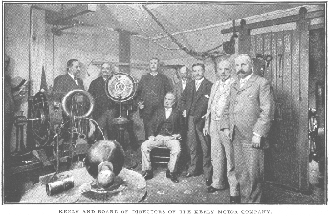
AFFAIRS OF THE KEELY MOTOR COMPANY.
PLAN FOR NEW ORGANIZATION WITH GREATER NUMBER OF SHAREHOLDERS.
NYT -April 29, 1896 - Differences among those interested in the Keely Motor Company are said by the companys officer in this city to be in the way of speedy adjustment. They had so retarded the work that recourse was had to the stockholders, about 2,000 in number, for relief. A plan for reorganization was devised which covered all points in dispute. Returned from stockholders show that a majority approve the plan. The Directors are thus authorized to smooth the way for future work by forming a new company, with 500,000 shares of stock in place of 100,000 shares. Mr. Keely will receive one-half the stock, out of which he will dispose of all claims against him for money advanced. The company will undertake to develop and utilize Mr. Keelys latest motor, which is said to be energized by vibration, in place of the old "etheric vapor." President B. L. Ackerman says that a commercial engine is nearly ready, and that it will probably have its first public test on a street car. Official denial is given to the report that Astor or Vanderbilt money will be inverted in the company. Indications some time ago that this might happen came to nothing.
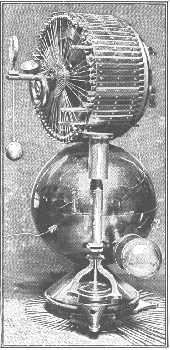
NEW ETHERIC ENGINE AND ITS POWERS DISPLAYED IN PHILADELPHIA
TO REPRESENTATIVE RAILROAD MEN.
NYT -PHILADELPHIA, Penn., June 19, 1897.- A test of the new etheric engine was made yesterday at Inventor Keelys laboratory in this city. A number of gentlemen were present, including General Manager Fransioli of the Manhattan Elevated Railway, New York: Mechanical Engineer Pierson of the same company, Chief Electrical Engineer Brown of the Western Union Telegraph Company, and Mr. Sterritt of the Metropolitan Traction Company, New York. All were surprised at the force produced by Mr. Keelys new motor, but they declined to express any opinion as to its value. The new engine is a complicated structure, arranged and supplied with vitalized disks of metal, placed at intervals on two hoops or bands of steel, one of which runs inside the other. These disks are composed of a secret metallic composition. Mr. Keelys representative said he has a large number of drawings, specifications, and photographs, which he will, when he applies for a patent, submit to the authorities at Washington. This he expects to do in about thirty or sixty days. Aside from these disks, Mr. Keely has also prepared a metallic powder, which, to look at, very much resembles iron or steel filings, but which lacks one essential feature of iron or steel - it will not respond to the attraction of a magnet. The engine, which weighs about 200 pounds, will, it is said, develop fully ten-horse power.
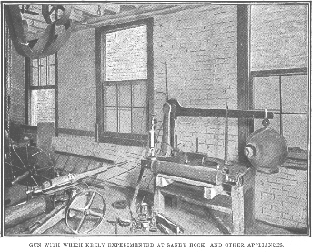
PRESIDENT OF THE MOTOR COMPANY DEFENDED THE DEAD INVENTOR.
NYT -January 26, 1898 - President B. L. Ackerman of the Keely Motor Company, after a meeting of the Board of Directors of the company held yesterday at the office of the Treasurer of the company at 31 Broad Street, gave out a statement denying the published assertions that compressed air or electricity was the force used by Keely in his much-talked-of motor. The statement claims that the tubes spoken of were discarded by Keely many years ago and that in all his experiments since 1887 solid wires only have been used. Up to that time, it is stated, he was working upon a theory of etheric or vaporic force and used the tubes for the conveyance of this force; but after 1887 he became convinced that he had discovered something still more perfect in what he called vibratory sympathy. It was said that a concealed electric wire was found when Keelys workshop was recently cleared out. This President Ackerman states was the remnant of the wires of a burglar alarm, and was in no way connected with the force used in the Keely motor. The statement reviews at length the various assertions recently made tending to show that Keely was nothing more than a successful impostor, denies all these assertions and declares positively that there was no trickery about any of the results that Keely claimed to have obtained.
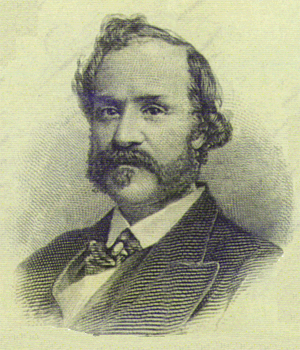 |
||
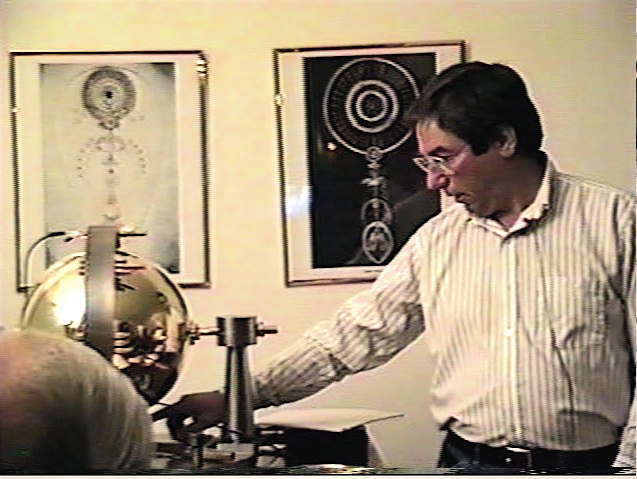 |